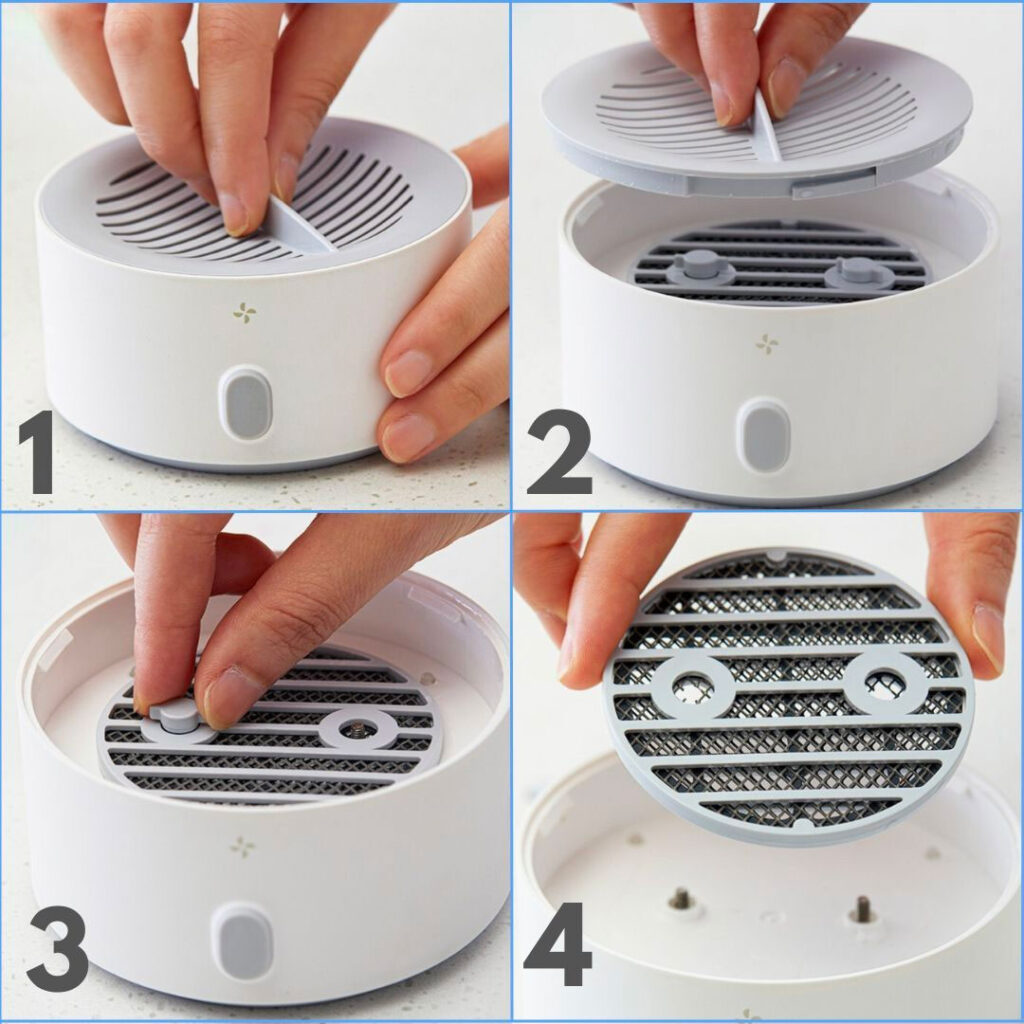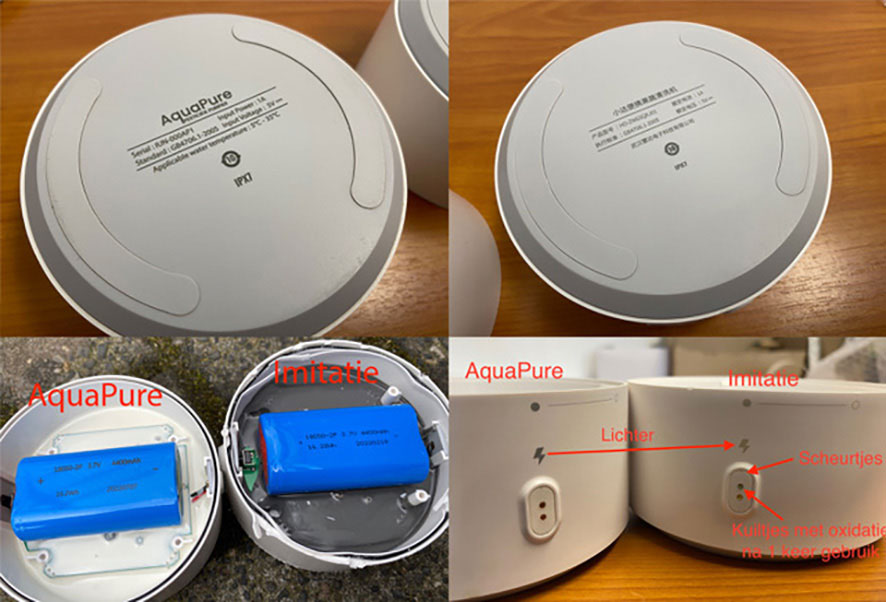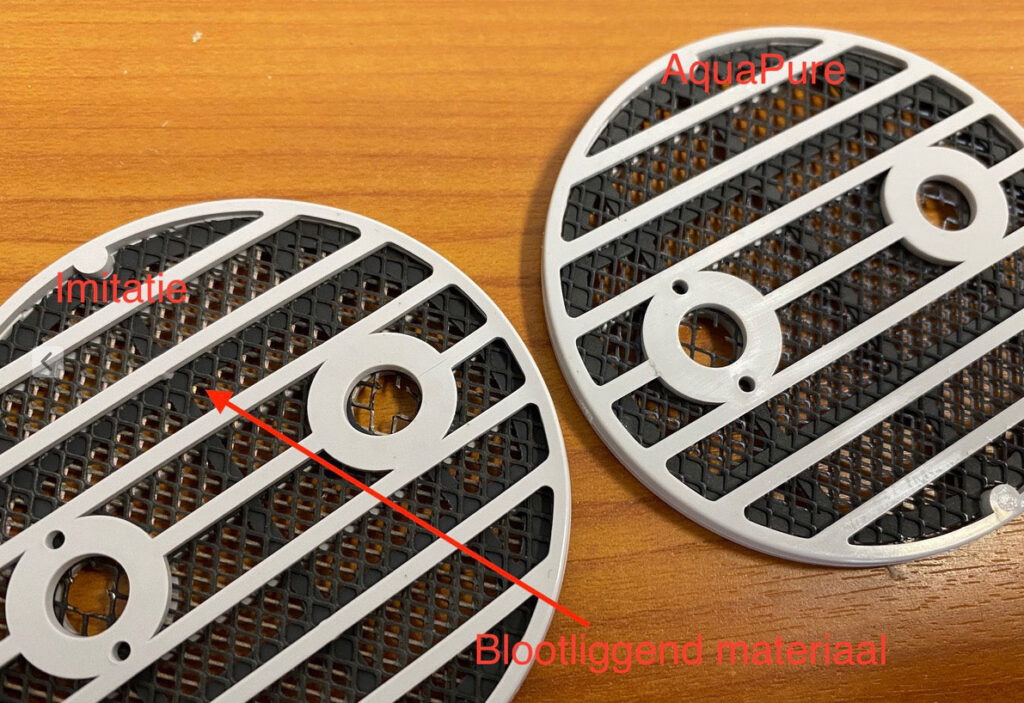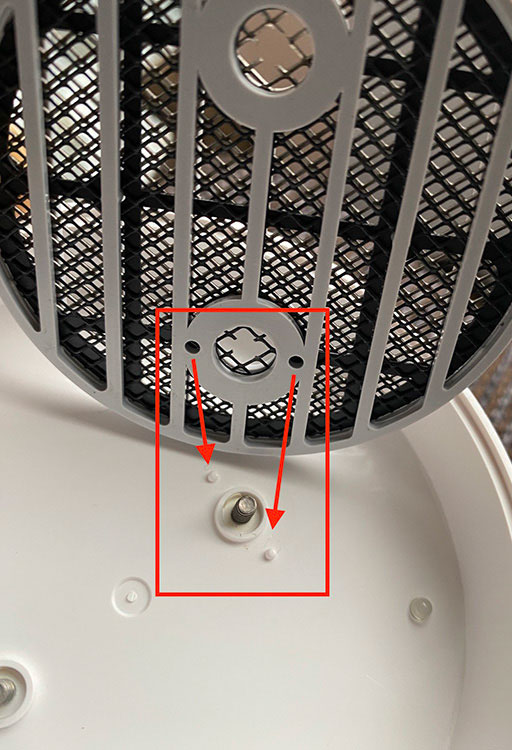Frequently asked questions AquaPure pesticide cleaner
Find answers to frequently asked questions about the AquaPure products here. These are also supplemented from time to time. All answers are based all information from the manufacturer's knowledge base, additionally supplemented by our own experiences.
Use
Some fruits and vegetables tend to float, preventing the electrolysis water from doing its job optimally. You can easily solve this by placing a plate or cutting board on your fruit and vegetables while the AquaPure is on. This keeps the fruit and vegetables submerged in water and ensures optimal cleaning. And your cutting board is also completely disinfected again!
The effect of electrolysis has been widely researched and assessed as very safe in many studies (1, 2, 3, 4). It is important to rinse your vegetables/fruit under the tap with a colander after cleaning, to get rid of any last residues of the electrolysis water. You cannot drink the (residual) water from the electrolysis. Some people are frightened by the smell of chlorine (bleach), but this is perfectly normal.
It is indeed true that pesticides can enter the fruit through the skin
come, but almost all studies agree that this is usually only a small amount. The problem is really mainly the skin. There are more than 1,000 pesticides on the market, each one working differently. We cannot lump all pesticides together. Now, we did have neonicotinoids in the past, known to spread throughout the plant (and be lethal to bees), but their use has been severely restricted in the EU. With almost all of them, it seems that the problems are mainly limited to the skin. The thicker a husk is, the better, by the way.
For a smaller quantity of fruit and vegetables, 1 cycle of 5 minutes is sufficient, followed by another 5 minutes of post-soaking time. For a larger portion in a larger container, we recommend 2 cycles of 5 minutes and 5 minutes post-soaking. In principle, you can now use the electrolysis water for a second serving, but AquaPure itself still recommends starting again with clean water for this. This way we can be sure there is no pesticide contamination from the earlier serving. After treating, it is important to rinse your fruit and vegetables under the tap for a while.
A pinch of salt (knife tip) in a normal container of water is sufficient. Put the salt in the bowl, then fill it with water. Stir a little more if you see undissolved salt. When the salt is well dissolved in the water, the AquaPure can be used.
In principle, you can use the AquaPure in any container, usually a stainless steel sink or a plastic container. However, our preference is for glass. At IKEA, they sell a 28 cm glass bowl under the name TRYGG sold for just a few euros.
It is as if this bowl was made for the AquaPure, because as you can see, it fits exactly on the bottom. It doesn't get any cheaper and healthier!
Cut vegetables and (dried) fruits should not be treated with the AquaPure, not only because the vitamins and minerals will leak out, but also because these foods can absorb the electrolysis water. Electrolysis water contains aggressive free radicals that effectively deal with pesticides, but which you don't want to ingest. This is why it is important to rinse your fruits and vegetables under the tap after cleaning. Or if necessary, submerge them in a container of filtered water as well. Always let your fruit and vegetables dry thoroughly after cleaning before putting them in the fridge, otherwise they may go mouldy.
We recommend taking at least everything from the so-called Dirty Dozen wash with the device. These include strawberries, nectarines, apples, grapes, peppers, cherries, peaches, pears, celery and tomatoes. For fruit and vegetables in the Clean Fifteen or what is organic, rinsing well under the tap will suffice. There is no point cleaning crops with thick skin, such as a banana, orange, kiwi, onion, mango, pineapple, melon or avocado. The appliance is only suitable for whole (leafy) fruits and vegetables. Regular potatoes are better peeled, they do not need to be treated with the AquaPure. We recommend eating organic potatoes with skin. You can treat these, but you don't necessarily have to if you use a brush rinse well under the tap beforehand. Mushrooms can absorb moisture, so the advice is not to treat them. Mushrooms, by the way, are in the Clean Fifteen, so it is not strictly necessary to wash them thoroughly.
The AquaPure is designed to be enjoyed for a long time. To prolong its service life, it is important to observe a few things. Herewith 7 important tips for using the AquaPure and a long life of the device:
- Use not too much salt, a knife point is enough!
- Dry the device thoroughly after use and especially the charging contacts to prevent corrosion on these.
- Use not too cold water, better if it is approximately at room temperature.
- You better clean lots of fruit and vegetables at once, then only 1 or 2 vegetables/fruits each time. This way you save the battery.
- Put the AquaPure not to if he not in the water sits.
- Also, never put the device away for long periods of time with a flat battery, this can be harmful to the battery.
- Clean your AquaPure regularly, see also manual.
Annoying that the AquaPure is no longer working. There are a few steps you can try to troubleshoot the problem and see if we can get it working again.
- If it no longer charges properly: Moisten the charging point with (organic) vinegar and leave for a while (on a kitchen grate, stick it on and let it sit for half an hour). Then scratch the charging point with a sharp knife or object to remove any dirt or rust (corrosion)? Then recharge the AquaPure.
- Make sure the device is fully charged. To do this, connect the device to the charger and let it charge for at least 5 hours. Make sure the charger is properly connected to both the device and a power source.
- Once the device is fully charged, you can perform a hard reset. To do this, press and hold the power button for about 10-15 seconds until the device turns off. Then release the power button and try switching the device on again.
- If the device still does not turn on, try connecting it to a different power source or use a different charging cable. Sometimes faulty cables or power sources can prevent the device from charging properly.
It is also possible that the parts have become slightly loose. To solve this problem, follow the steps below:
- Open the top of the device and you will see two screw buttons. See the image below.
- Then turn the two screw knobs to check that they are tight.
- Also check that the grille is properly fitted on top (you will see 2 dimples on the grille and 2 bumps on the appliance, these can only be fitted one way).
- Screw the top back on and charge the AquaPure for up to 5 hours.

If your AquaPure is still not working after performing the steps indicated, we would like to receive a short video of your AquaPure device showing the problems you are currently experiencing. We would then also like to receive a photo of the bottom, the side with the power button and the side of the charging point. You can easily send this to us via WhatsApp and otherwise take contact with us.
Material
We are regularly asked whether cheap unbranded variants or identical Chinese copies of this product are just as good. We strongly advise against this. Imitation devices may have electrolysis plates made of stainless steel, which can release the harmful and carcinogenic chromium-6, according to studies (8). Therefore, the cathode of the AquaPure is made of titanium and the anode is coated with ruthenium iridium for extra safety. Even though it is hard to see, but imitation models look slightly different and especially inside:


It is very important to choose reliability. The AquaPure has independent test results and with cheap clones this is by no means certain.
The AquaPure contains stainless steel and ABS plastic. Acrylonitrile butadiene styrene (ABS) is a recycled plastic compound that is itself fully recyclable. ABS is also widely regarded as more durable, longer-lasting and easier to recycle than PVC.
Yes, the AquaPure is phthalate-free, contains no traces of PVC and is completely BPA/BPS-free.
100 x 50 millimetres / 3.94 x 1.97 inches
The included charging cable has a USB connector. That means you can charge your AquaPure with any USB plug (not USB-C) you have in the house. The one from a phone charger, for example!
Yes, the magnetic charging cable is included in the box. It is a bit well hidden though, as it is in the double bottom of the box. NOTE: There is no plug included, but it is a regular USB plug that everyone has at home these days.
Cleaning, maintenance and storage
Most AquaPure devices are easy to open. However, in some units, the lid may come off stiffly, especially if it is not screwed on straight or if there is moisture or sand between the lid and the device. It is therefore recommended to open the AquaPure only when it is dry. If you do need to open the lid and it is stuck, try using a fork with a plastic handle. Insert the end of the fork into the smallest opening of a slot in the lid to remove it.
After daily use or every use, it suffices to briefly rinse your AquaPure under the tap. Make sure to include the entire device, especially giving the water a little time to flow through the grille. Afterwards, dry everything, not forgetting the charging point to prevent corrosion. After this, you can turn the appliance upside down to let the excess water drain out from inside. Then you can turn the device over again and let it air dry. It is important not to forget this last step, otherwise moisture and condensation will remain and that can shorten the life of your AquaPure.
It is a good idea to take the AquaPure apart once a month and give it a good cleaning by removing the cover, wing nuts and electrolytic plate and giving everything a good cleaning with a cloth or brush. You can then reassemble it. When putting the grille back together, make sure you do so correctly. You can see this by the dimples and bumps, see below:

If you prefer to purify all your fruits and vegetables at the same time, we recommend doing multiple cleaning cycles.
Our recommendations for optimal cleaning results are as follows:
1 to 3 litres of water: One cleaning cycle
4 to 6 litres of water: Two cleaning cycles
7 litres of water or more: Three cleaning cycles
To start a new cycle, simply click the ON button again. For better cleaning efficiency, adding a pinch of salt is recommended.
After daily use or every use, it suffices to briefly rinse your AquaPure under the tap. Make sure to include the entire device, especially giving the water a little time to flow through the grille. Afterwards, dry everything, not forgetting the charging point to prevent corrosion. After this, you can turn the appliance upside down to let the excess water drain out from inside. Then you can turn the device over again and let it air dry. It is important not to forget this last step, otherwise moisture and condensation will remain, which can shorten the life of your AquaPure. It is wise to take the AquaPure apart once a month and give it a good cleaning by removing the cover, wing nuts and electrolytic plate and giving everything a good clean with a cloth or brush. You can then reassemble it. When putting the grille back together, make sure you do so correctly. You can see this by the dimples and bumps, see below:

Warranty
Yes, every AquaPure comes with a 2-year warranty.
Manuals
Yes, it is available and you can download here.
Test results
That the AquaPure works has been demonstrated, among other things, in a Dutch lab research by Eurofins. This study showed that the AquaPure manages to reduce glyphosate in water by about 60% in 1 cycle. A newer study of AquaPure shows that 2 cycles can remove even more than 95% of the glyphosate on the peel. Older studies by AquaPure also show that this device is effective. All tests were conducted in international standard laboratories with strict safety protocols. All results can be found at this manufacturer's webpage.
Thereby, many independent studies can also be found on Pubmed showing that electrolysis is capable of effectively degrading pesticides (1, 2, 3, 4, 5, 6, 7).
The manufacturer rigorously tests numerous different pathogens and chemicals. This takes some time, as all tests must meet an internationally recognised standard for laboratory testing.
The AquaPure is proven to remove up to 99.9% of pesticides, bacteria and other harmful substances from your fruits and vegetables. All tests are carried out in international standard laboratories with strict safety protocols. All results can be found at this manufacturer's webpage.
Replace
The AquaPure is a one-off investment built to last. There are no expensive filters or other parts to replace.
